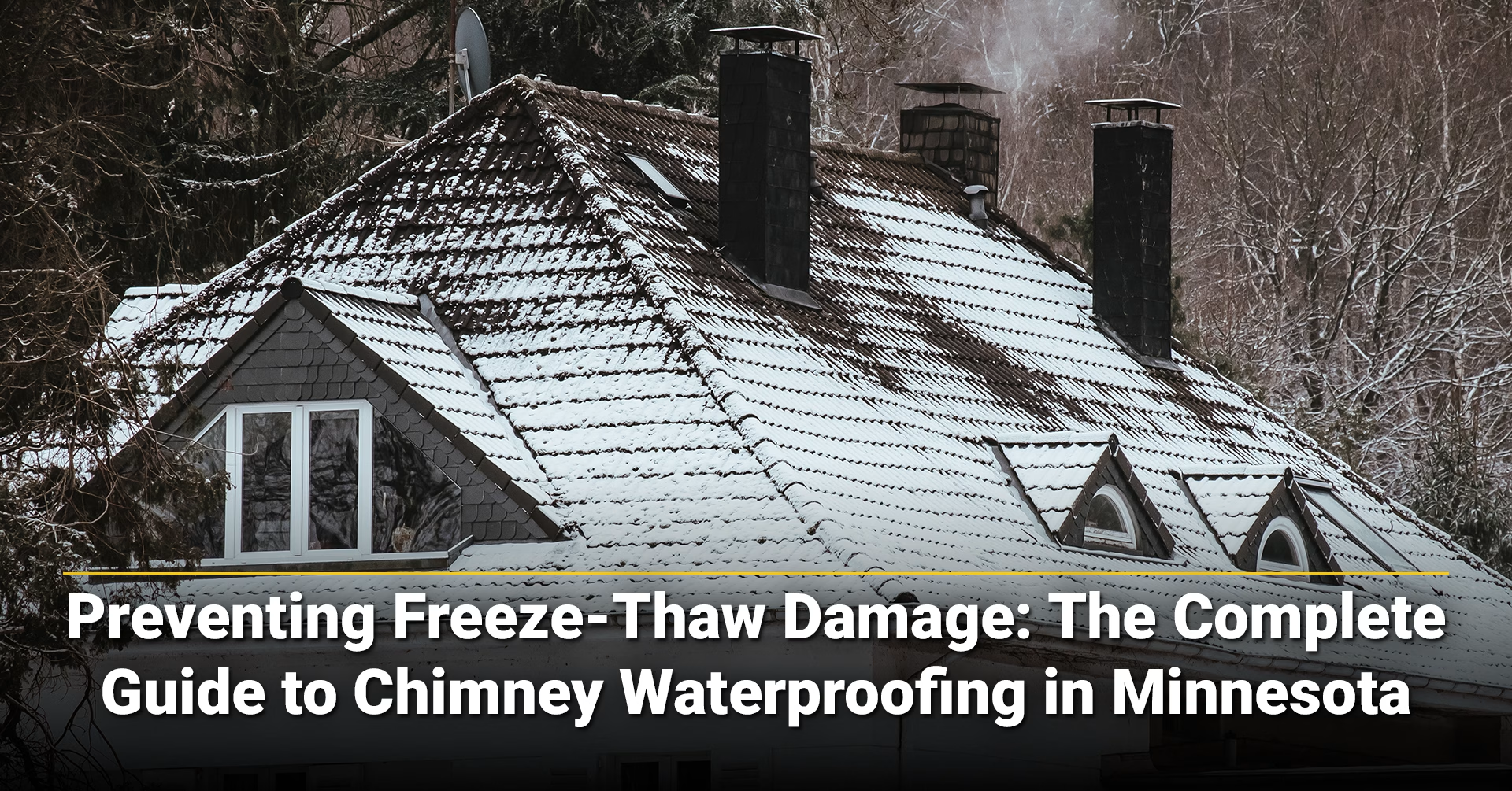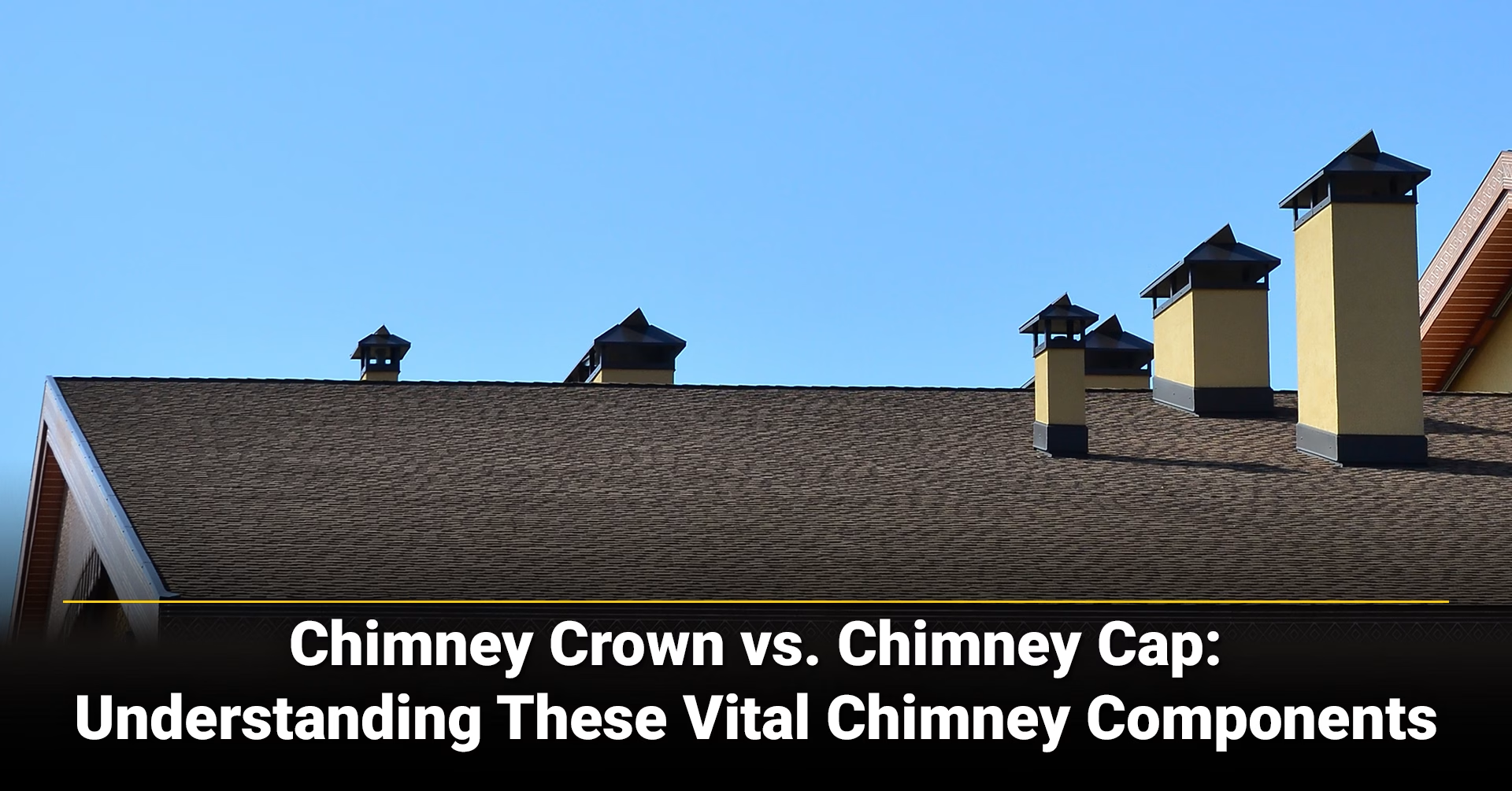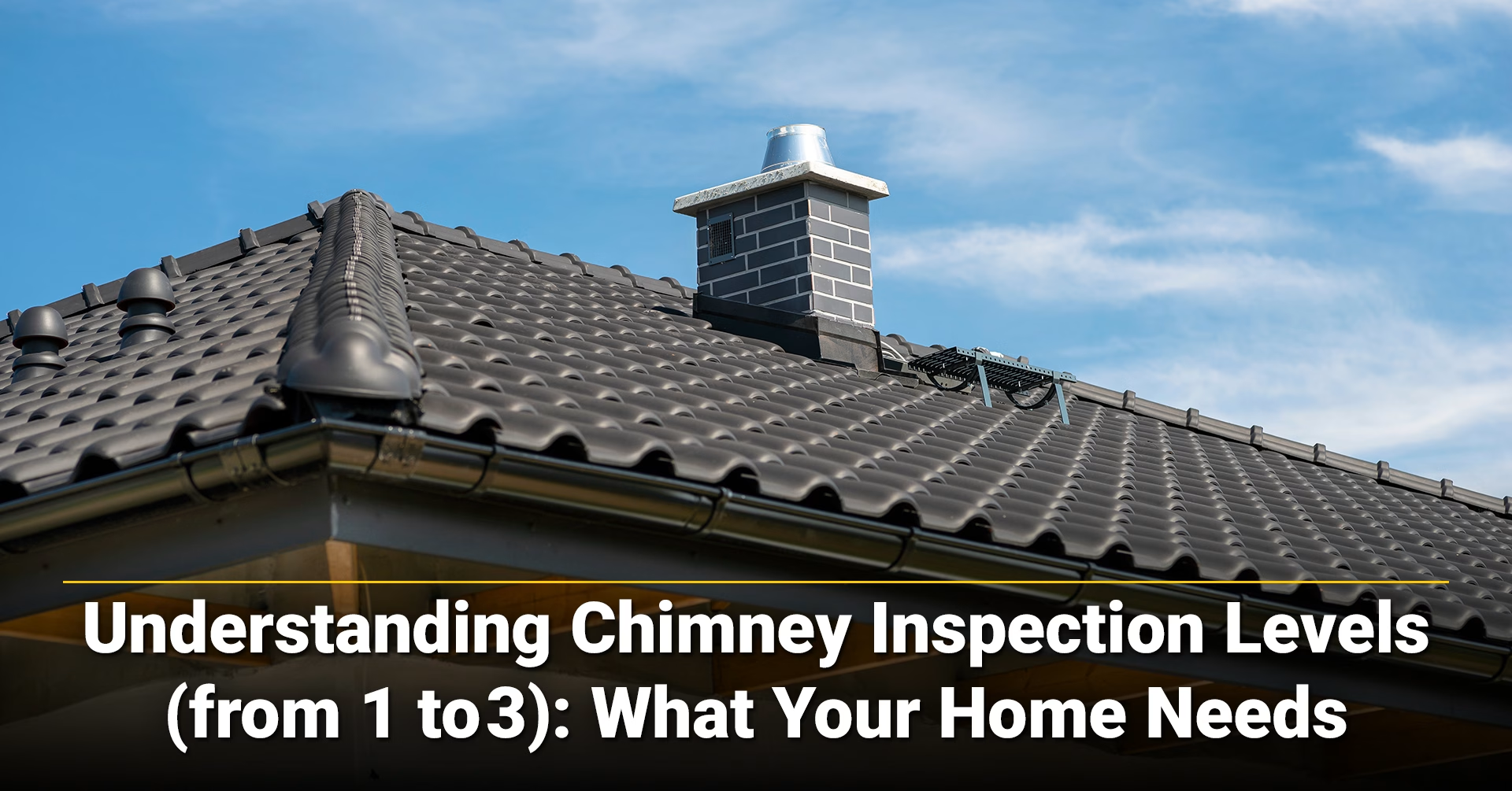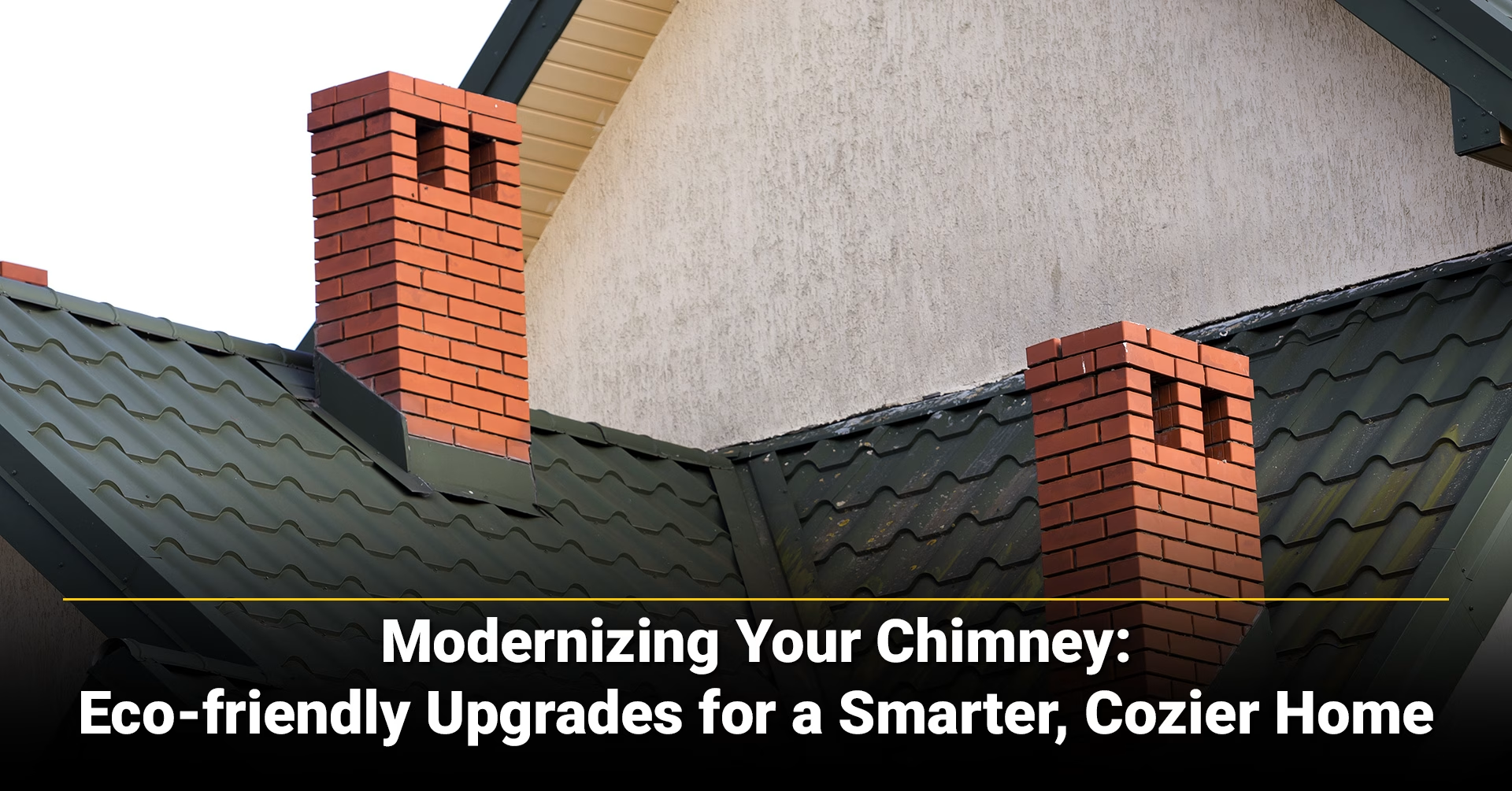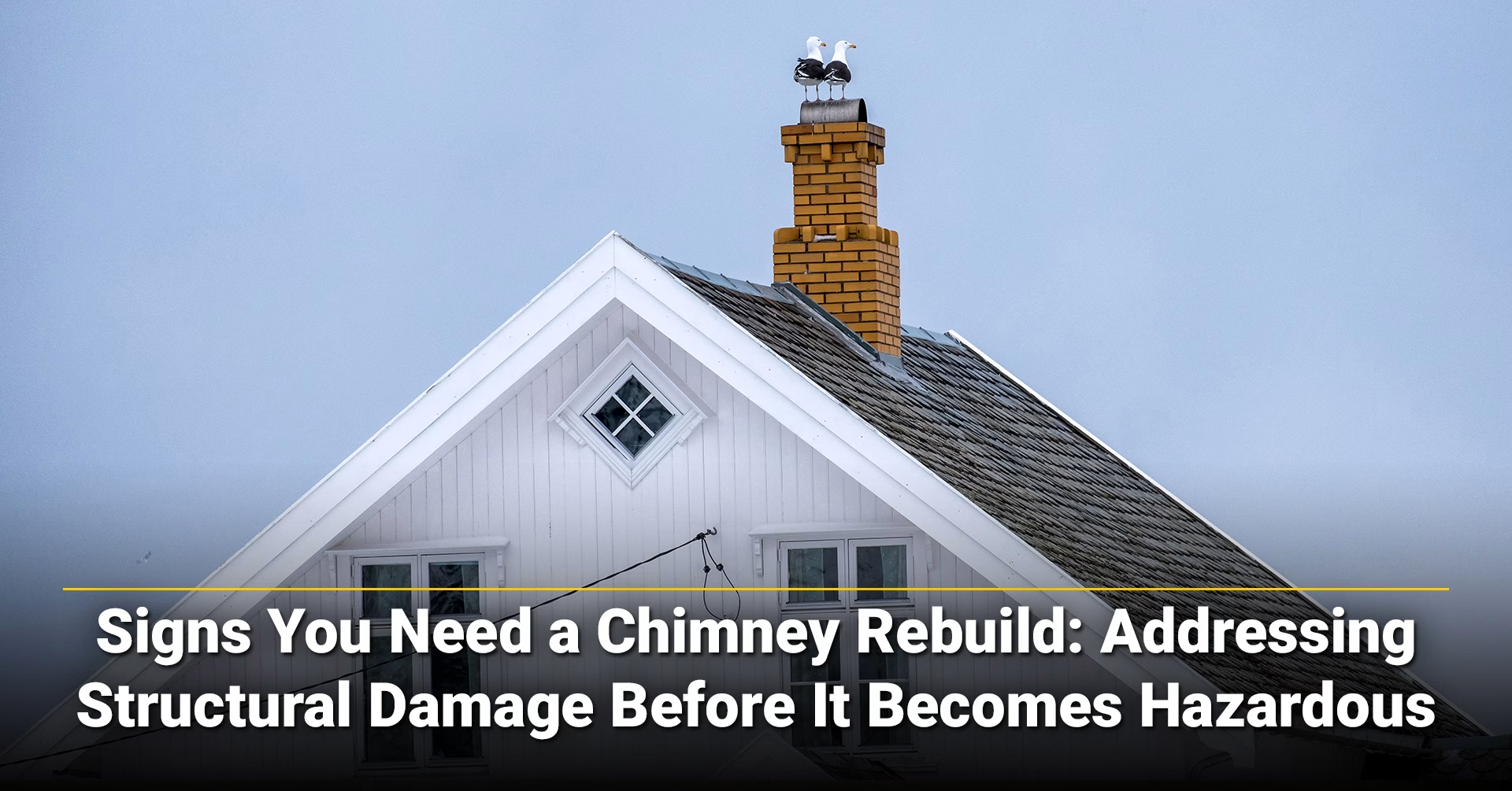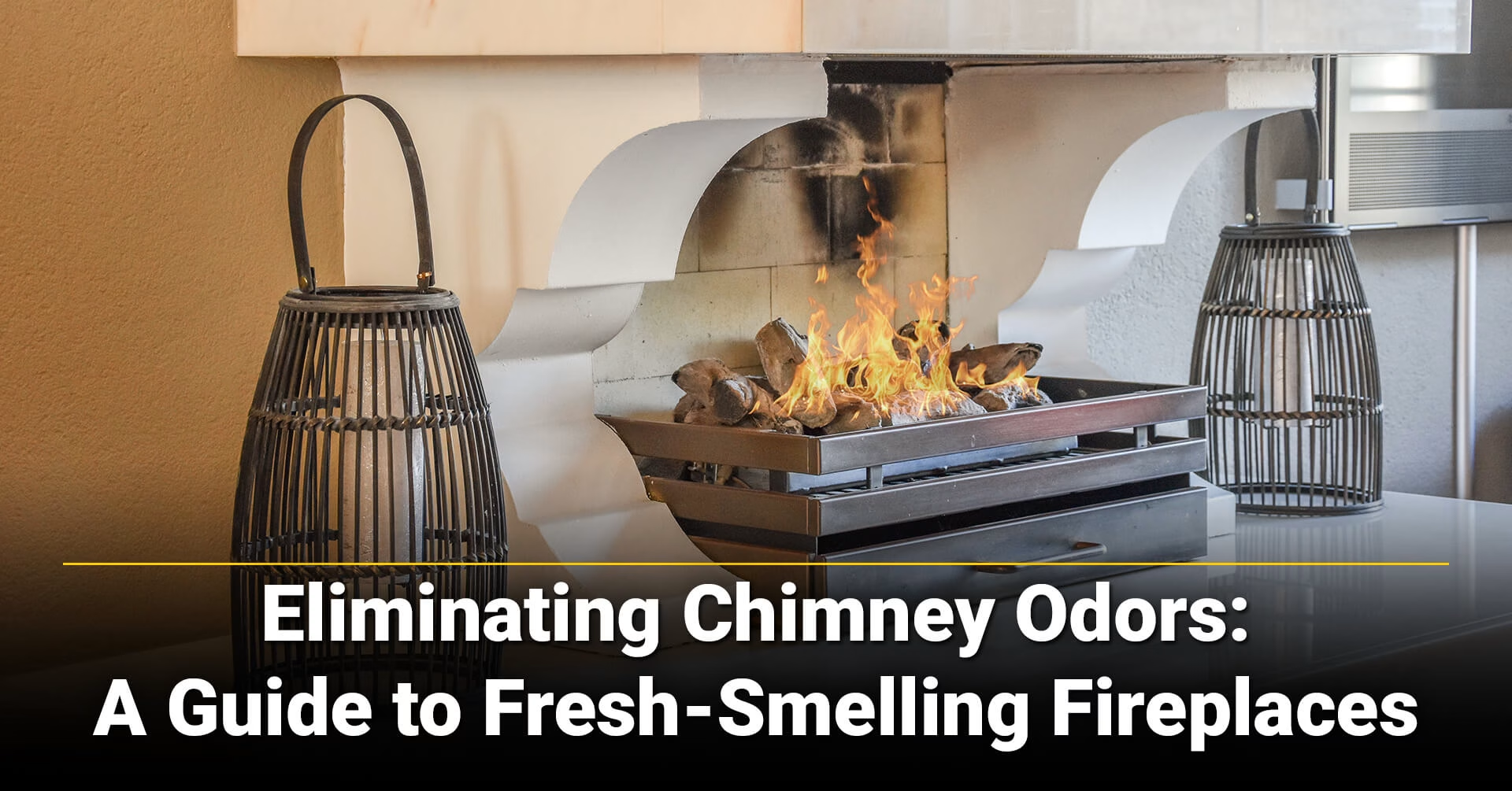Unpleasant odors that come from a fireplace or chimney are one of the common nuisances for homeowners. These smoky and musty smells creep their way into the home and latch onto the air in all rooms making the smell inescapable. Although some consider it as a stand part of being a homeowner, these issues should be treated with more seriousness than initially led on. Understanding their origins is the first step toward effective elimination and a fresh, secure living environment.
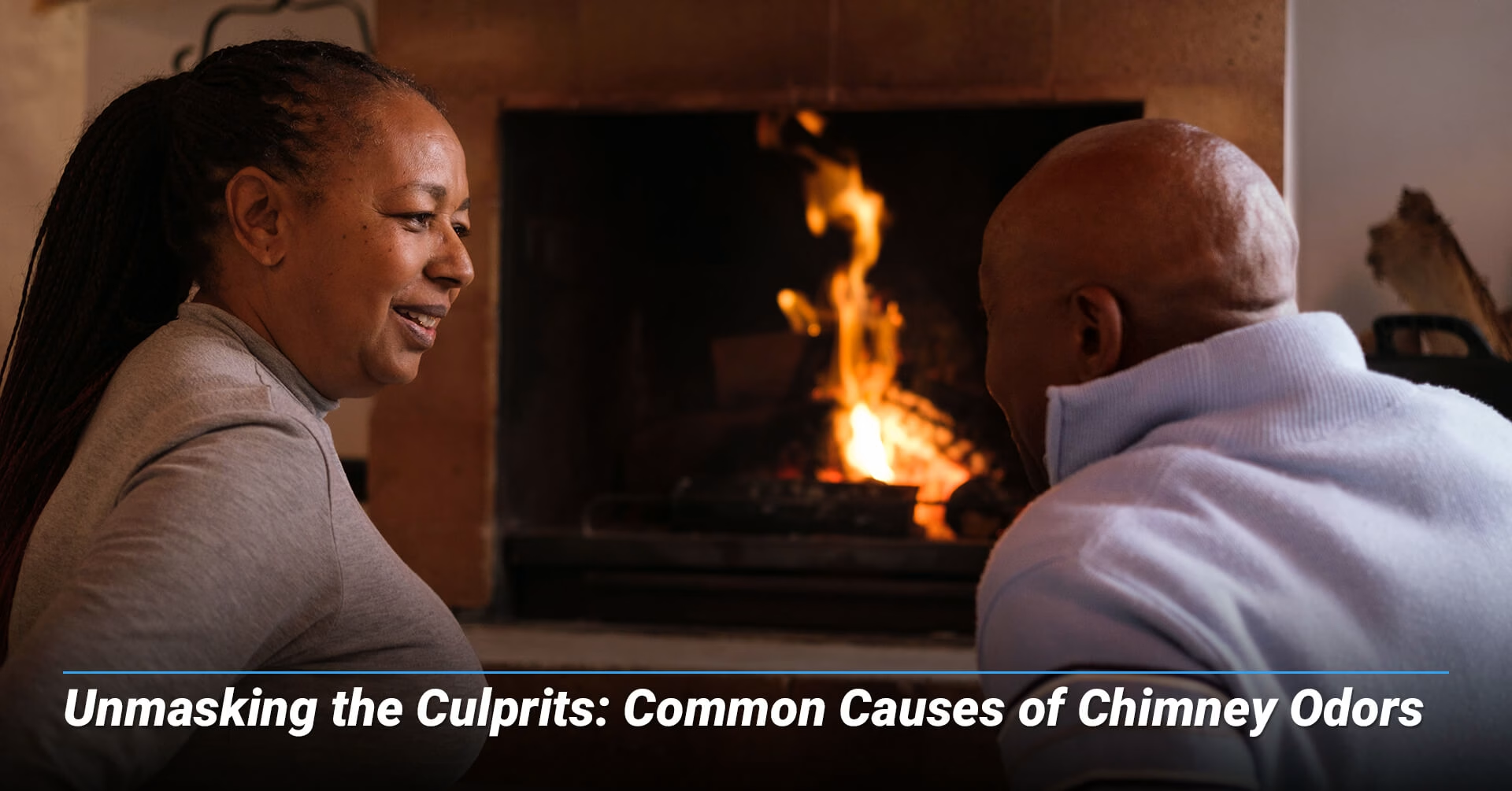
1. Unmasking the Culprits: Common Causes of Chimney Odors
Chimney odors stem from various sources, each requiring their own solution. Identifying the exact cause early is crucial here.
A. Creosote Buildup
Creosote is a highly flammable, tar-like byproduct when the wood does not properly burn. . What forms when smoke condenses on cooler flue walls, it creates a sticky residue that absorbs into brickwork. It is then followed by a distinct smell best described as, “barbecue” or “asphalt.” This is prevalent during the humid weather (making it more volatile) or when AC is running (creates negative air pressure and attracts smells indoors) and can lead to unwanted chimney fires.
B. Animal Intrusions & Decaying Matter
Chimneys attract local wildlife including birds, squirrels, racoons, bats, and rodents. Animals will bring nesting materials, leave droppings, or become trapped and pass away, all leaving horrendous odors. These can obstruct the flue, hindering ventilation and increasing risks of smoke backup, carbon monoxide intrusion, and chimney fires. Attempting to remove on your own can be incredibly difficult if untrained, illegal (for protected species), and dangerous, with the risk of further blockage or injury generally not worth the reward.
C. Mold & Mildew from Water Damage
A damp or musty smell indicates excess moisture, leading to mold and mildew growth. The perfect breeding ground for this mixed with creosote intensifying odors. Water will enter through cracks and damages can lead to interior (rusting, peeling paint) and exterior (efflorescence, spalling) damages. Persistent musty odors mean the damage is significant and requires professionals to inspect and suggest next steps.
D. Poor Draft & Negative Air Pressure
A proper chimney draft ensures smoke and odors exit efficiently. However, issues can arise from older homes not being equipped with modern tech including excessive creosote, blockages, or negative air pressure. This reduces indoor air quality and poses safety risks, including carbon monoxide buildup. Such situations often require professional diagnosis of the home’s overall air dynamics.
E. Burning Unseasoned Wood
Unseasoned (wet or “green”) firewood contains significant moisture. Burning it expends energy drying the wood, which in turn leads to cooler flames and incomplete combustion. This generates more smoke and accelerates creosote formation, directly contributing to stronger, pungier odors. Always burn well-seasoned, dry wood, and avoid painted or treated wood.
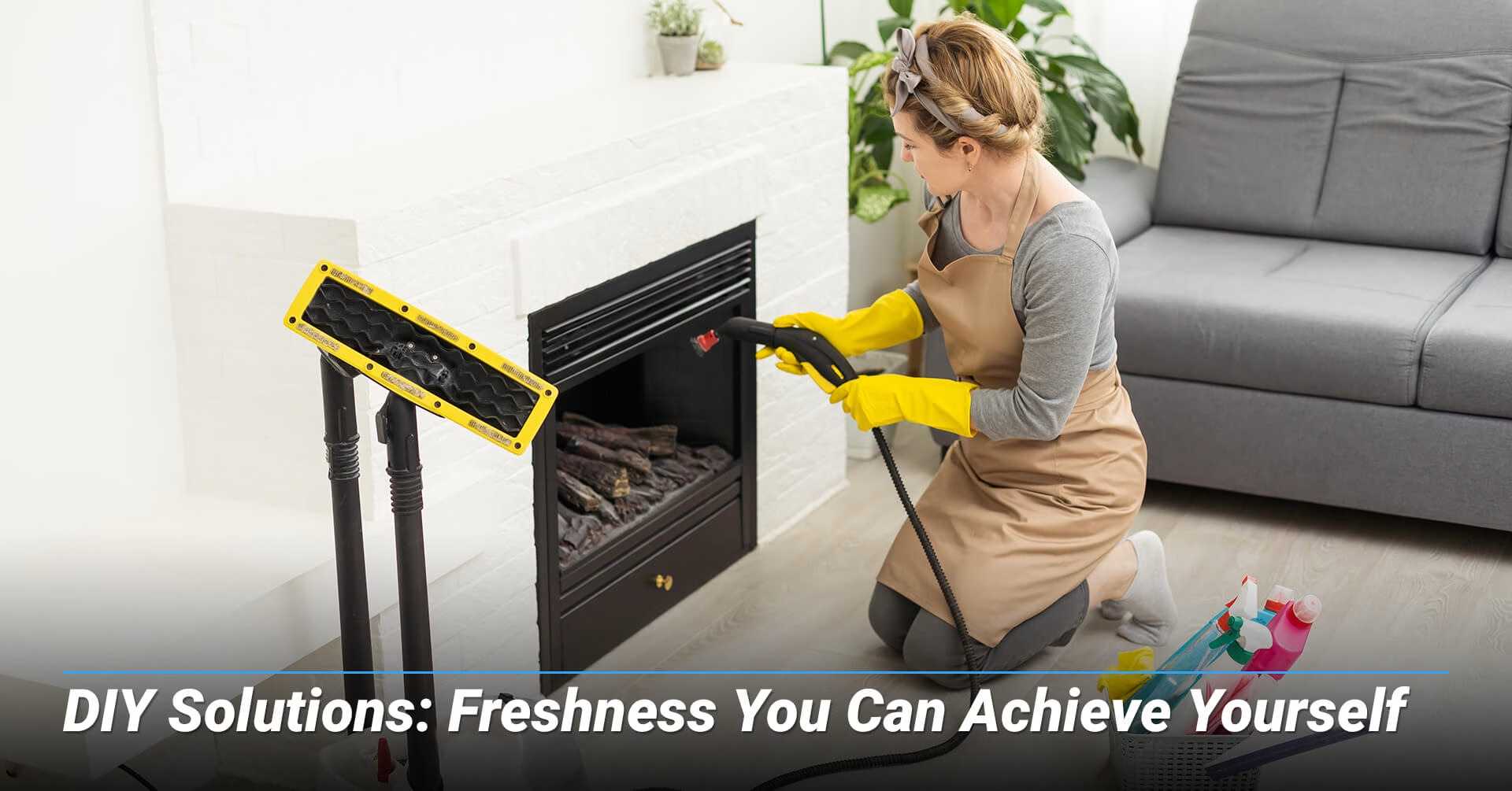
2. DIY Solutions: Freshness You Can Achieve Yourself
For minor odor issues, homeowners can implement several steps to improve their fireplace’s scent and cleanliness.
A. Thorough Firebox Cleaning
Proactively removing ash and debris prevents odors, but wait 24-72 hours after burning to do so. Metal ash bucket and shovel are more equipped for removal while cleaning can be done with a stiff brush and a solution of equal parts white vinegar and water, all-purpose cleaner, or diluted dish soap (never mix vinegar with bleach or ammonia. For gas fireplaces, turn off the gas valve, vacuum dust, and clean logs and glass doors. Always wear safety goggles and a dust mask.
B. Airing Out the Space
Opening windows and using fans to create cross-ventilation can dissipate lingering odors. However, this is only a temporary solution and if odors continue, then this means there is a deeper issue.
C. Odor Absorbers & Commercial Deodorizers
Natural absorbers like bowls of white vinegar, baking soda, activated charcoal, or coffee grounds are great for absorbing smells. Specialized fireplace deodorizers (wick-style bottles) can neutralize these for months. Portable air purifiers can remove odors from the air while masking or absorbing smells. However, this is done without addressing the root causes.
D. Maintaining Proper Ventilation (DIY Aspects)
Proper damper use is crucial. Fully open the fireplace damper before lighting a fire while keeping it open until ashes are cool. Close the damper when not in use to reduce odors and prevent conditioned air loss. During colder temperatures it’s best to pre-heat the flue with newspaper to help establish an updraft.
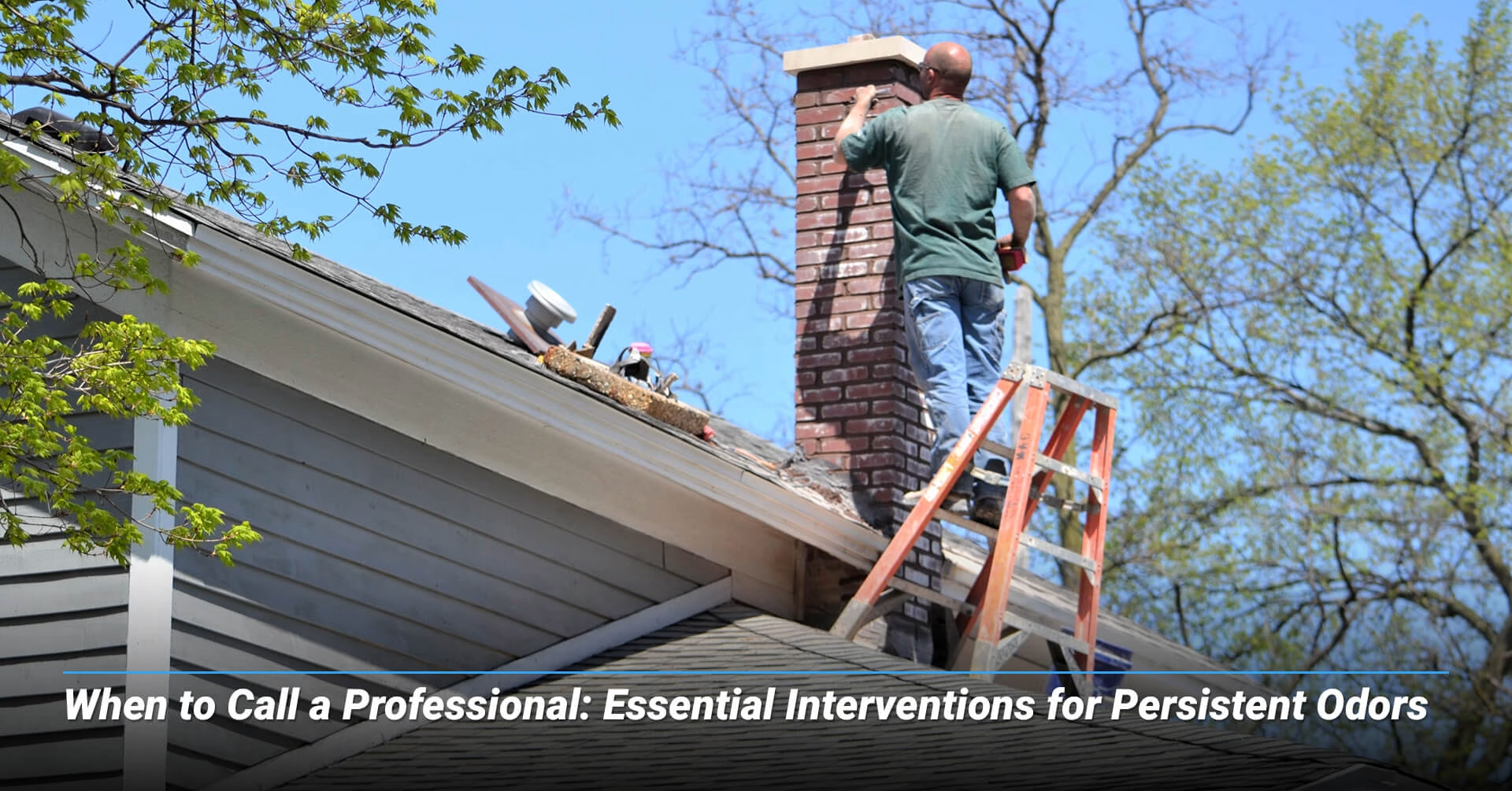
3. When to Call a Professional: Essential Interventions for Persistent Odors
While DIY efforts can address minor odor issues, many common causes necessitate professional expertise for effective and safe resolution.
A. Deep Creosote Cleaning
First-degree creosote (light powder) can be repaired on one’s own but second and third degree will require specialized tools (high-powered rotary tools, specialized brushes, whips, rods, and industrial vacuums) handled by professionals. They may also apply chemical treatments like Cre-Away. DIY attempts risk fire, health hazards, chimney damage, and ineffective cleaning. Professional cleaning is the better preventative measure financially as its average ($129-$400) is considerably less than repairing fire damage or botched repairs ($10,000-$100,000).
| Creosote Level | Appearance | Ease of Removal | Recommended Action |
|---|---|---|---|
| First-Degree | Light powder/soot-like | Easily removed | DIY (light brushing) |
| Second-Degree | Shiny black flakes | Tougher to remove | Professional cleaning (specialized tools) |
| Third-Degree | Tar-like coating | Most serious/difficult | Professional deep cleaning (chemical treatments, rotary tools) |
B. Safe Animal Removal
Attempting to remove live animals can lead to harm if not done carefully as lighting a fire to smoke them out can be hazardous, along with being illegal for protected species. Licensed wildlife removal companies use humane trapping, one-way doors, or cone excluders to safely remove animals and nests. They ensure all animals are relocated, then clean and sanitize the chimney. Professional installation of a high-quality stainless-steel chimney cap with a mesh screen is the most effective way to keep these critters out of where they’re not supposed to be.
C. Comprehensive Water Damage Repair & Mold Remediation
Persistent water infiltration signs (stains, rust, efflorescence, deteriorating mortar) indicate significant underlying issues. For a better understanding, certified chimney specialists use video cameras to pinpoint the leak’s root cause (crown, flashing, mortar, liner). Professional repair methods include crown repair/replacement, flashing repair/replacement, masonry repair (tuckpointing), and waterproofing.
Professional mold remediation is crucial for resolving these issues, especially if larger than 10 sq. ft. It involves assessment, isolation, air filtration, removal of affected materials, cleaning, sanitizing, drying, and encapsulation. Water damage can lead to mold growth, posing health risks for you and your family.
D. Addressing Poor Draft & Structural Issues
Complex draft problems stem from improper flue sizing, stack effect, or insufficient chimney height and professionals can accurately diagnose these issues. Solutions include flue relining, chimney height extension, mechanical draft inducers/fans, air supply ventilators, damper repair/replacement, and structural repair (cracked masonry, leaning chimneys, spalling bricks).
E. Chimney Cap Installation & Repair
A chimney cap is vital for preventing animal intrusion, keeping out rain/debris, and minimizing downdrafts. Professional installation ensures proper sizing, secure fitting, and code compliance.
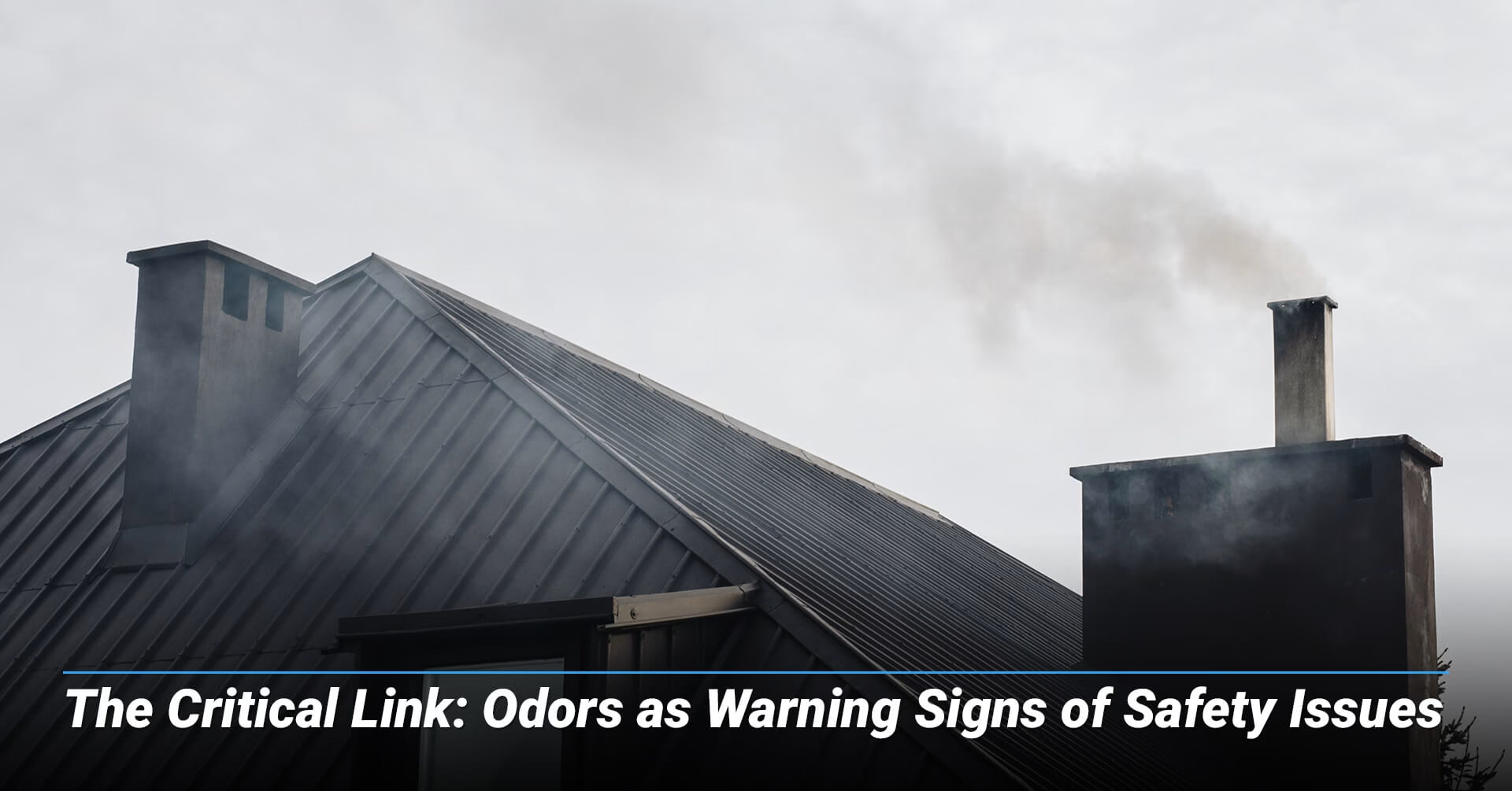
4. The Critical Link: Odors as Warning Signs of Safety Issues
Persistent chimney odors are more than an annoyance; they are crucial indicators of underlying safety hazards.
A. Fire Hazards
Creosote buildup is the primary cause of chimney fires along with blockages from animal nests or debris that also increases fire risk. Putting these off can lead to an increase in costs as problems get larger, while insurance rates will follow as they do not cover damages from neglect.
B. Carbon Monoxide (CO) Poisoning
Carbon monoxide (CO) is an odorless, colorless, deadly gas that can cause a variety of issues if left untreated. These include damaged liners, blockages, or poor draft can lead to leaks. Symptoms mimic the flu (headache, dizziness, nausea). Therefore, a persistent chimney odor should prompt professional investigation, especially if accompanied by flu-like symptoms that improve when leaving the house.
It is critical to install battery-operated or battery-backup CO alarms on every home level and outside sleeping areas. Test monthly and replace annually. If an alarm sounds, evacuate immediately, call 911/fire department, and do not re-enter until advised to do so.
| Symptoms (Low-Moderate) | Symptoms (High-Severe) | Clues of a Leak (beyond symptoms) | What to Do Immediately |
| Headache, fatigue, dizziness, nausea, shortness of breath, confusion | Impaired mental state, vertigo, loss of coordination, fast heart rate, chest pain, seizures, loss of consciousness, death | Soot/stains around vents, yellow/orange pilot light, heavy condensation, exhaust fumes, sick pets | Go outside to fresh air, call 911/fire department/gas company, do a head count |
C. Structural Damage
Water intrusion and wear can cause significant structural damage (spalling, cracked mortar, leaning/collapsing chimney). Damages can lead to further water damage, roof compromise, and reduced home value. Persistent odors from water intrusion are a major red flag that require immediate professional assessment to remedy.
D. The Dangers of Botched DIY & Insurance Implications
Attempting complex chimney repairs (structural, heavy creosote, liner) without proper knowledge or tools will lead to more harm than good. Mistakes can worsen the damage, create new fire/CO hazards, lead to costly rectifications, and result in personal injury. Many homeowners insurance policies do not cover damage from neglect or improper DIY, potentially voiding coverage or denying claims. The better option is hiring a CSIA-certified and insured professional to ensure safety, code compliance, and proper insurance/liability protection.
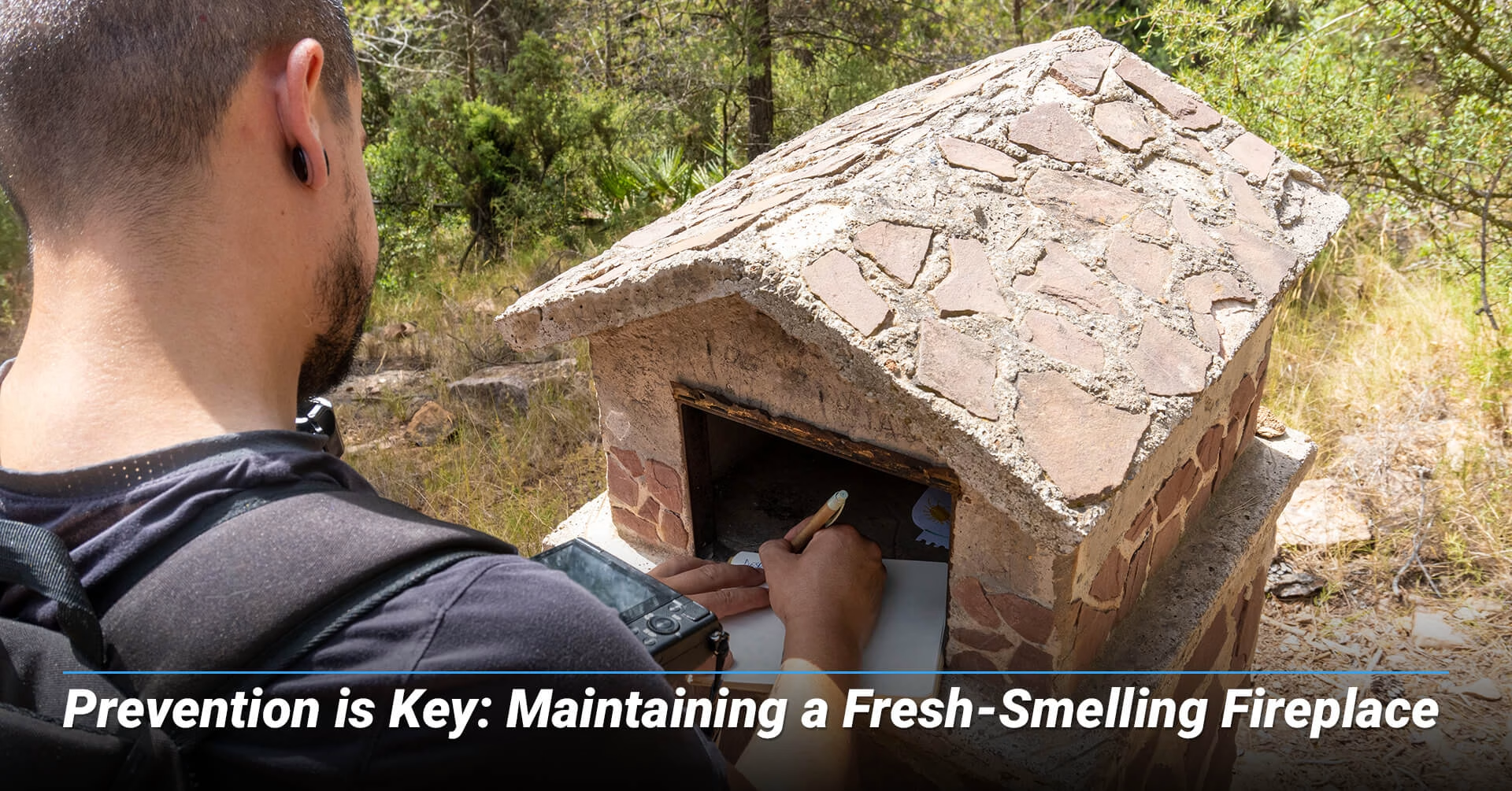
5. Prevention is Key: Maintaining a Fresh-Smelling Fireplace
Proactive maintenance is the most effective way to prevent chimney odors and ensure long-term safety and efficiency.
A. Annual Professional Chimney Inspections
NFPA 211 recommends annual inspections for soundness, freedom from deposits, and correct clearances. Doing so detects hidden issues like pyrolysis, structural damage, and CO leaks early, leading to significant savings.
B. Regular Cleaning and Maintenance Schedule
Homeowners should regularly clean the firebox. Professional cleaning frequency is contingent upon the usage and creosote buildup.
C. Using Seasoned Wood and Proper Burning Techniques
Burn only dry, well-seasoned firewood to minimize smoke and creosote while keeping adequate airflow by fully opening the damper and avoiding overpacking the firebox.
E. Ensuring Proper Chimney Cap and Damper Function
Regularly check the chimney cap for damage or blockages to prevent animal intrusion, moisture, and downdrafts. Ensure the damper seals tightly when not in use to ensure air exchange and prevent odors.
Conclusion: Breathe Easy with a Well-Maintained Chimney
Chimney odors, though common, are crucial indicators of underlying issues—from simple buildup to serious fire hazards, carbon monoxide leaks, and structural damage. Addressing these smells is vital for home safety and comfort.
While homeowners can handle minor cleaning and odor management, like heavy creosote removal, animal intrusions, comprehensive water damage repair, and structural issues demand specialized professional expertise. Annual inspections and timely interventions by certified experts are vital. A well-maintained chimney ensures a fresh-smelling fireplace that makes the home safer and more efficient. Homeowners should seek professional assessment for persistent odors for peace of mind and their property’s long-term health.
Frequently Asked Questions
1. Why does my chimney smell worse in summer or humid weather?
Chimney odors, especially smoky or musty smells, often intensify in warmer, more humid
months or when air conditioning is running. High humidity makes creosote (a tar-like byproduct of burning wood) even more apparent. Additionally, air conditioning systems can create negative air pressure inside the home, pulling air and odors down the chimney and into the living space.
2. Can a persistent chimney odor indicate a serious safety issue?
Yes, persistent chimney odors are often crucial indicators of underlying safety hazards. A strong smoky smell can signal significant creosote buildup, which is the leading cause of chimney fires. Musty odors indicate water damage, which are the first steps towards structural damage and mold growth. Blockages from creosote or animal nests can also cause smoke and dangerous carbon monoxide (CO) to back up into your home. Any persistent odor warrants professional assessment.
3. What kind of animals commonly cause chimney odors, and how are they safely removed?
Common culprits include birds, squirrels, raccoons, bats, and rodents. They enter chimneys for shelter, bringing nesting materials, leaving droppings, or sometimes getting trapped before ultimately passing away. Professional removal is crucial due to safety risks for homeowners. Professionals use humane trapping, one-way doors, or cone excluders to safely remove animals and their young, then clean and sanitize the chimney. Installing a high-quality stainless-steel chimney cap with a mesh screen is the best prevention.
4. How often should I have my chimney professionally cleaned or inspected to prevent odors?
The National Fire Protection Association (NFPA) Standard 211 recommends annual professional chimney inspections. This helps detect hidden issues like creosote buildup, blockages, or water damage early to prevent odors and more costly repairs. Professional cleaning frequency depends on usage, but annual inspections are a non-negotiable preventative measure for safety and efficiency.
5. Can water damage in my chimney cause odors, and how is it typically fixed?
Yes, water damage is a common cause of musty or damp odors, as it promotes mold and mildew growth, especially when mixed with creosote. Water enters through cracked chimney crowns, damaged caps, faulty flashing, or deteriorating mortar joints. Professionals diagnose where this is coming from, often with video cameras. Repairs can include the chimney crown, flashing, or mortar joints (tuckpointing), waterproofing the masonry, or addressing damaged flue liners. Professional mold remediation is also crucial for significant mold growth.

